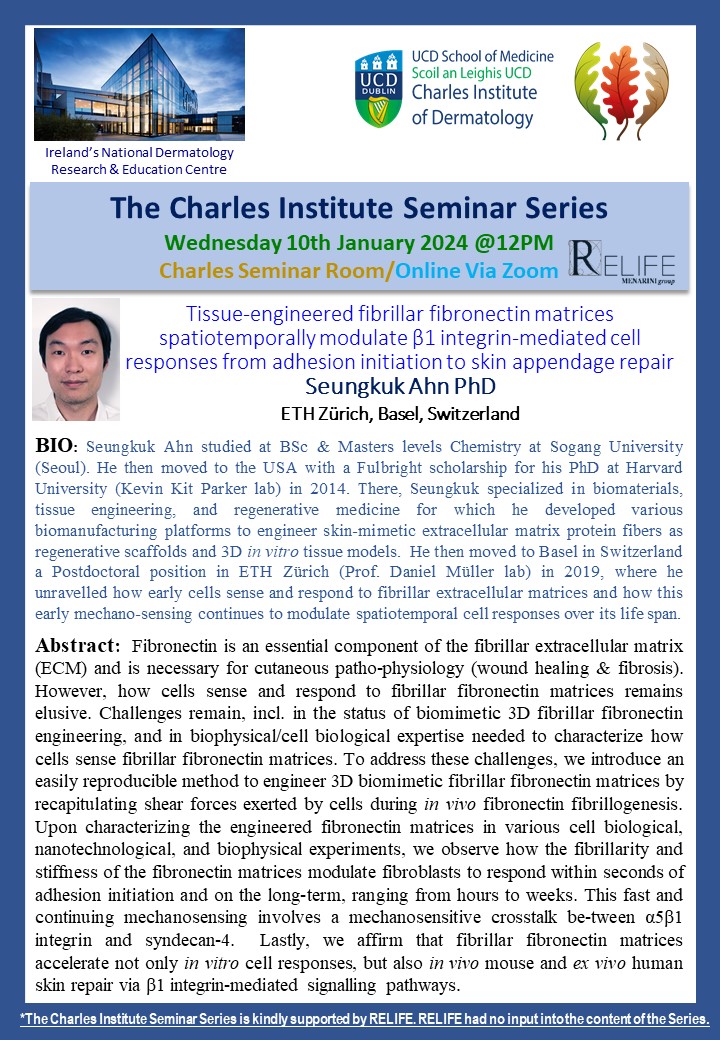Charles Institute Seminar Series 2023-24: Tissue-engineered fibrillar fibronectin matrices spatiotemporally modulate β1 integrin-mediated cell responses from adhesion initiation to skin appendage repair with Guest Speaker Seungkuk Ahn PhD
Date of Talk: Wednesday 10th January 2024 @12PM
Location: Charles Seminar Room / Online Via Zoom
Talk Title: Tissue-engineered fibrillar fibronectin matrices spatiotemporally modulate β1 integrin-mediated cell responses from adhesion initiation to skin appendage repair
Speaker Details: Seungkuk Ahn PhD, ETH Zürich, Basel, Switzerland
Short Biography: Seungkuk Ahn studied at BSc & Masters levels Chemistry at Sogang University (Seoul). He then moved to the USA with a Fulbright scholarship for his PhD at Harvard University (Kevin Kit Parker lab) in 2014. There, Seungkuk specialized in biomaterials, tissue engineering, and regenerative medicine for which he developed various biomanufacturing platforms to engineer skin-mimetic extracellular matrix protein fibers as regenerative scaffolds and 3D in vitro tissue models. He then moved to Basel in Switzerland a Postdoctoral position in ETH Zürich (Prof. Daniel Müller lab) in 2019, where he unravelled how early cells sense and respond to fibrillar extracellular matrices and how this early mechano-sensing continues to modulate spatiotemporal cell responses over its life span.
Abstract for talk: Fibronectin is an essential component of the fibrillar extracellular matrix (ECM) and is necessary for cutaneous patho-physiology (wound healing & fibrosis). However, how cells sense and respond to fibrillar fibronectin matrices remains elusive. Challenges remain, incl. in the status of biomimetic 3D fibrillar fibronectin engineering, and in biophysical/cell biological expertise needed to characterize how cells sense fibrillar fibronectin matrices. To address these challenges, we introduce an easily reproducible method to engineer 3D biomimetic fibrillar fibronectin matrices by recapitulating shear forces exerted by cells during in vivo fibronectin fibrillogenesis. Upon characterizing the engineered fibronectin matrices in various cell biological, nanotechnological, and biophysical experiments, we observe how the fibrillarity and stiffness of the fibronectin matrices modulate fibroblasts to respond within seconds of adhesion initiation and on the long-term, ranging from hours to weeks. This fast and continuing mechanosensing involves a mechanosensitive crosstalk be-tween α5β1 integrin and syndecan-4. Lastly, we affirm that fibrillar fibronectin matrices accelerate not only in vitro cell responses, but also in vivo mouse and ex vivo human skin repair via β1 integrin-mediated signalling pathways.
